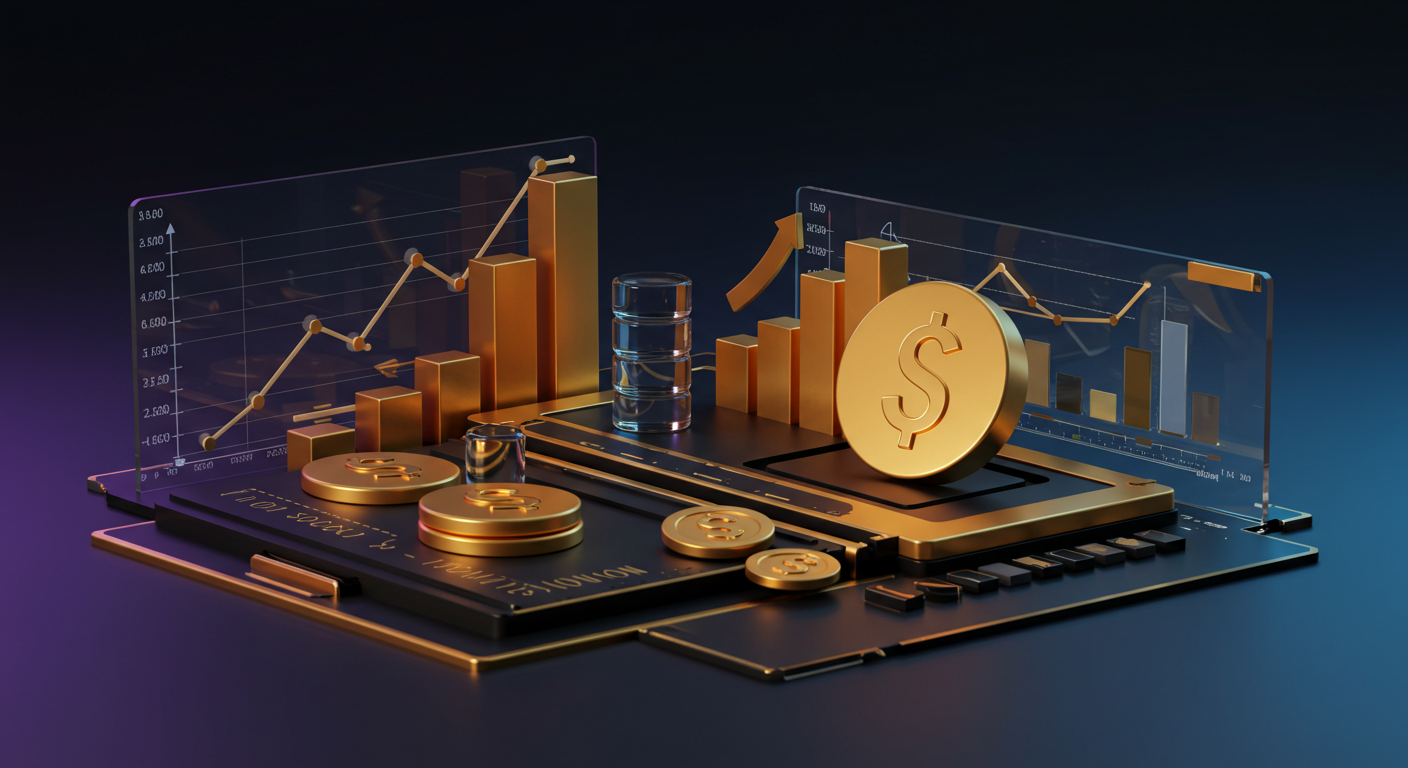
Gold prices have been buoyed by increased safe-haven demand following a downgrade of the US credit rating. This downgrade is due to projections of US federal debt rising to 134% of GDP by 2035 from 98% in 2023.
Gold’s market value stood near $3,230 per troy ounce amid concerns over the US economic outlook. The downgrade, by one notch, moved US credit from Aaa to Aa1, citing rising debt and interest payment burdens.
Challenges to the US Fiscal Position
This follows previous downgrades by other agencies, with deficits expected to widen due to increased spending, debt costs, and reduced tax revenue. The previous week saw gold prices fall by over 3% amid optimism over a preliminary US-China trade agreement and potential US-Iran nuclear deal.
A series of disappointing US economic indicators has bolstered expectations of rate cuts by the Federal Reserve. The Consumer Sentiment Index fell to 50.8 in May, a decline for a fifth consecutive month, contrary to predictions it would rise to 53.4.
Gold investment is seen as a stable choice during uncertain times and a hedge against inflation. Central banks are major holders, and a strong US Dollar usually keeps gold prices controlled, while a weaker Dollar can lead to price increases.
The information above outlines a few core developments that have pushed gold prices upwards, as well as hazards around the US fiscal position that potentially impact decisions in related markets. The motion in gold pricing—hovering close to $3,230 per troy ounce—follows a downgrade of long-term US creditworthiness. That shift, from the top-tier Aaa to the slightly lower Aa1 credit rating, isn’t a small accounting change. Instead, it’s grounded in sober forecasts: projections suggest US federal debt could climb to 134% of GDP by 2035, up from about 98% in 2023.
In practice, this magnifies the cost of borrowing for the US government, as market participants begin to reprice risk. The repeated cuts in ratings by multiple agencies reflect a technical but growing discomfort around endless deficits, heavy spending, and flagging tax inflows. When such pressure on public books knocks confidence in the nation’s solvency, gold tends to rise because investors begin to guard their portfolios against currency exposure and asset devaluation.
Concern Over Economic Indicators
We’ve also noticed that the US economy has been giving off some worry signals. Consumer sentiment metrics, often a real-time gauge of household mood, have dipped steadily—May’s reading slumped to 50.8 when a modest improvement had been expected. That kind of erosion, five months in a row, points to deeper caution rather than just temporary gloom. If consumers retreat in spending, broader corporate earnings and cyclical investments start winding lower. The Federal Reserve leans heavily on such data when shaping rates policy, so it’s not surprising that market expectations have veered toward more dovish action in the months ahead.
In terms of short-term movements, gold did take a brief step back recently, dropping over 3% in a week on optimism tied to possible easing in two geopolitical flashpoints: a thaw in US-China trade discussions and tentative progress on agreements with Iran. These glimmers of stability tended to scale down demand for safe havens—for a moment, at least.
However, with rising debt costs and growing anticipation of rate relief, the longer-term support for gold has reinforced. Historically, the metal finds ongoing traction when interest rates move lower because the opportunity cost of holding non-yielding assets diminishes. On top of that, the US Dollar fluctuates in the background like a counterweight. A firm Dollar can restrain gold to a degree since it raises the price for international buyers. But when the Greenback softens, that usually opens the door for a gold rally.
Looking ahead, what seems clear is that we are entering a stretch where fiscal risk and interest rate assumptions will keep adjusting. As traders, it’s our role to track these inflection points in fixed-income markets and their knock-on effects. If the Federal Reserve pivots more explicitly, gold can become even more reactive than it has been. Central banks are still persisting with purchases as part of foreign-reserve strategies, implying underlying demand while inflationary pressures lurk globally. There’s a delicate path forming between declining consumer confidence, rate expectations, and residual political volatility abroad.
In the short run, volatility in positioning will hinge on upcoming macro data, Treasury auctions, and possible interventions by policymakers. Depending on how these unfold, derivative markets stand to see pronounced swings in gold options across maturities, particularly with implied volatility still pressing near seasonal highs.







